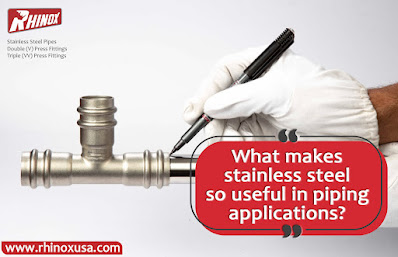Copper pipe vs stainless steel pipe
As both stainless steel plumbing and copper are ideal for environments both indoors and outdoors, they exhibit excellent durability over time. Industrial piping, as well as other applications, can be made with these two metals due to their unique functional properties and features. Copper piping can either be drawn or annealed and is typically made from almost pure or pure copper. Common methods of joining copper tubing include brazing, soldering, and fittings with flanges and flares. Pressure fitting is another option, without the need for hot works or specialized labor. In a contrast, stainless steel water pipe consists of diverse alloys containing 12 to 30 percent chromium, which shields them from corrosion as long as their concentration is higher than 12 percent. Stainless steel and copper share some characteristics, but they have many differences worth examining. Resistant to corrosion Piping systems with corrosion resistance do not corrode either from the





